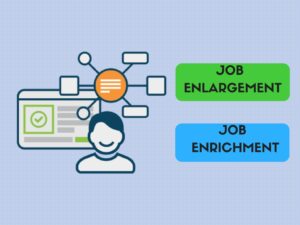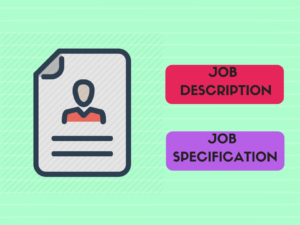Training and Development are the terms which are usually used as combined terms in many cases, but there exist many differences between them and there is a need to know these differences by every management graduate, employees to understand the various things happening around them in the organization. This article is mainly emphasized on differentiating the terms Training and Development.
TRAINING
An employee when first joined in the organization he is so much confused and doesn’t know about the culture of the organization and from the first day of joining he will be given training in various job activities to make him aware of the work and his role in fulfilling the duty he is assigned. To facilitate the employee with all the information he requires to perform the job he is given rigorous training to make him adaptable and suitable for the work he is assigned.
The training given to the new employee is defined by Edwin.B.Flippo as, ” Training is the act of increasing the knowledge and skill of an employee for doing a particular job”. There are various training methods which are used by the management but all of those methods come under two categories named as
⦿ On the Job Training
⦿ Off the Job Training.
DEVELOPMENT
Development is the term which refers to ‘Employee Development’ when taking in relation with Human Resource Management. Every business organization uses various development programs to develop the skills of the employee and make them more efficient. The Employee Development Programme mainly refers to the programs conducted by the management for employees who are executives or senior managers of the organization.
The companies undertake various development programs and some of them are Programmed instructions method, under study, special projects, special courses, and lectures, case study’s, brain- storming methods, computer modelling methods, etc for improving the skills of the employees for overall development of the organisation and also to increase the ability of the employees.
DIFFERENCE CHART
| TRAINING | DEVELOPMENT |
|---|---|
| Employee Training Programmes are mainly designed for non-managerial and technical employees in the organization. | Employee Development programs mainly designed for higher level executives and also for the employees who are in dominant managerial roles. |
| NATURE | |
| Employee Training is the mainly an initiative of the employer to train the newly joined employee. | Employee Development is an initiative of an employee to learn new things related to his work or others. |
| FOCUSED ON | |
| Employee Training programs mainly emphasize on fulfilling the specific need or purpose. | Employee Development programs concentrated on a generalized need. |
| CONSIDERED AS | |
| Employee training is considered as a reactive process. | Employee Development is considered as a proactive process. |
| RESULT OF | |
| Training is the result of the external stimulus from the employer i.e. employer insists on compulsory training to the employee. | Development is the result of internal stimulus developed in the mind of the employee. |
| PROCESS | |
| Employee training is a one-time process i.e after the aims of the training program is achieved, it is wrapped after getting feedback from the employees. | Employee Development is a continuous process in which an employee is constantly upgrading his knowledge by various development programs. |
| IMPACT | |
| If employee training is correctly done it will benefit both organization and employee but if the employee is not interested in training it is a loss to the organization. | Employee Development is always a positive process it will benefit both employee and organization also. |
CONCLUSION
Both Training and Development measures are very important for every organization for the overall development of the organization as well as an employee. Employee training helps employees to know the processes and follow the rules while doing the job which leads to more productivity whereas Employee Development is a measure of overall improvement of the employee in terms of work and also in respect with morale and behavior of the employee.





